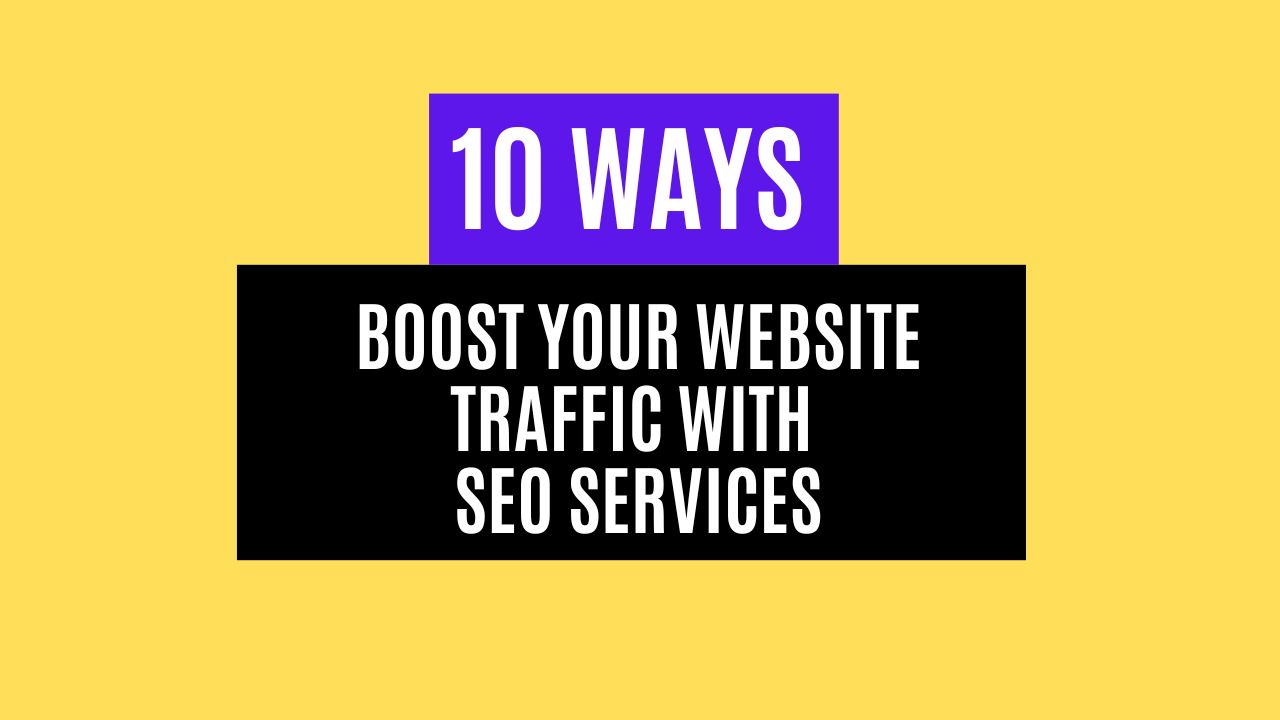If you’re running a website, you’ve probably asked yourself, “How do I get more visitors?” Whether it’s a blog, an online store, or a portfolio, growing your traffic isn’t just about luck—it’s about strategy.
That’s where SEO (Search Engine Optimization) comes in. With the right techniques, you can turn your website into a traffic magnet.
SEO might sound overwhelming, but don’t worry! This guide will break it down for you in a way that’s easy to follow and super effective.
Now, let’s dive into 10 proven ways to supercharge your website traffic with SEO services!
1. Optimize Your Keywords Like a Pro
Keywords are the backbone of SEO. These are the words and phrases people type into search engines when they’re looking for something. To get more traffic, you need to target the right keywords.
Here’s what to do:
- Use tools like Ubersuggest to find keywords people are searching for.
- Focus on long-tail keywords (phrases with 3-4 words) because they’re less competitive and often have higher intent.
- Sprinkle your keywords naturally in your content, titles, and meta descriptions.
If you’re not sure where to start, an SEO freelancer can research and implement high-performing keywords tailored to your niche.
2. Create High-Quality, Engaging Content
Content is king—there’s no getting around it. But here’s the trick: it’s not just about writing a lot; it’s about writing what your audience wants to read.
What makes content engaging?
- Solve problems your readers face.
- Use a conversational tone (like we’re doing here).
- Add visuals like images, videos, or infographics.
Hiring an SEO content writer can save you time and ensure your blog posts and pages are optimized for search engines while being super engaging for readers.
3. Improve Your Website Speed
No one likes a slow website—not visitors and definitely not Google. A slow site can drive people away faster than a pop-up ad.
Quick fixes to speed things up:
- Compress images to reduce file sizes.
- Use caching plugins if you’re on WordPress.
- Upgrade to a better hosting plan if your site gets a lot of traffic.
If tech isn’t your thing, an SEO expert can perform a website audit and handle all the technical stuff for you.
4. Master On-Page SEO
On-page SEO involves optimizing elements directly on your website. Think titles, headers, and even your URL structure.
Here are some quick tips:
- Use your target keyword in the page title and headers.
- Write meta descriptions that are short, snappy, and keyword-rich.
- Add alt text to images for better visibility on search engines.
This step-by-step process might feel tedious, but it’s worth it. And if you’d rather not spend hours tweaking every detail, SEO services can be a lifesaver.
5. Build High-Quality Backlinks
Backlinks are like online endorsements. When other websites link to yours, search engines see it as a vote of confidence.
How to get those precious backlinks:
- Write guest posts for reputable blogs in your niche.
- Create shareable content, like guides or infographics.
- Reach out to websites and pitch your content for backlinks.
Backlink-building takes time, but there are professionals who specialize in this. They can help you secure quality links to boost your site’s authority.
Read More: How to Improve Your Website’s SEO with Backlink Services
6. Make Your Website Mobile-Friendly
Did you know over half of web traffic comes from mobile devices? If your site isn’t mobile-friendly, you’re losing visitors—and ranking points.
What makes a site mobile-friendly?
- It should load quickly on mobile devices.
- The layout should adjust automatically to different screen sizes.
- Buttons and links should be easy to click.
Most SEO professionals include mobile optimization as part of their services, so don’t hesitate to let them handle it.
7. Leverage Local SEO
If you’re running a business with a physical location, local SEO is your best friend. It helps you get discovered by people in your area.
To start:
- Create a Google Business Profile (formerly Google My Business).
- Encourage happy customers to leave reviews.
- Use location-based keywords (e.g., “best pizza in Chicago”).
8. Use Analytics to Track Progress
How do you know if your SEO efforts are working? By tracking your progress with tools like Google Analytics or SEMrush.
Key metrics to monitor:
- Organic traffic: Are more people finding you through search engines?
- Bounce rate: Are visitors staying on your site or leaving immediately?
- Keyword rankings: Are you climbing higher on the results page?
9. Optimize for Voice Search
With smart speakers and voice assistants becoming more popular, optimizing for voice search is no longer optional. Voice search queries tend to be longer and more conversational, so targeting these can help you tap into a growing audience.
Tips for voice search optimization:
- Focus on natural, question-based keywords.
- Write content that answers common questions in your niche.
- Make sure your site is mobile-friendly since most voice searches happen on mobile devices.
10. Stay Updated with SEO Trends
SEO is constantly evolving, and what worked last year might not work today. That’s why staying updated is crucial.
Some trends to keep an eye on:
- AI-driven search algorithms.
- Video content’s growing importance in search rankings.
- Changes in Google’s ranking factors (e.g., Core Web Vitals).
Keeping up with these changes can feel like a full-time job.
Wrapping It Up
SEO isn’t a one-and-done task—it’s an ongoing effort. But the rewards are worth it: more traffic, more visibility, and more success for your website. Whether you’re ready to roll up your sleeves or prefer to leave it to the pros, there are plenty of ways to grow your traffic.
And if you’re leaning toward hiring an expert, platforms like Fiverr make it super easy to find affordable, talented SEO freelancers who can help you achieve your goals.
So, what are you waiting for? Start implementing these strategies today and watch your website traffic soar!

